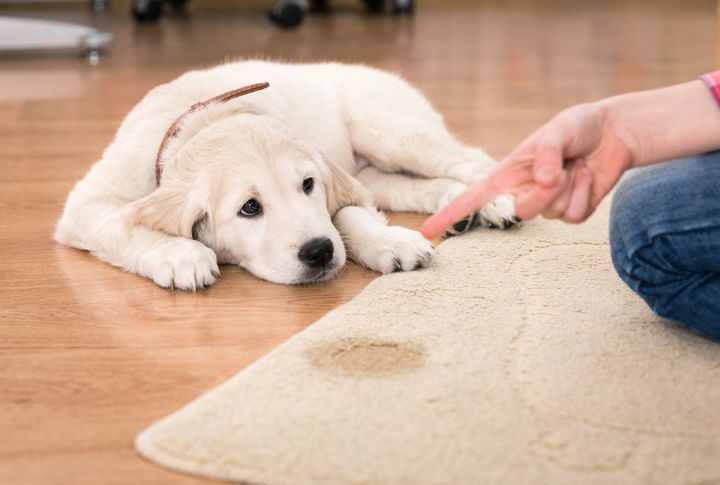
Training a dog for your home can be challenging, but it’s a necessary part of pet ownership. One of dog owners’ most common issues is urinating in the house, even though it may be an accident. It is possible, however, to teach a dog to only urinate in the appropriate outdoor locations. Here are some practical tips and strategies to stop your dog from peeing at home.
Establish a Routine

Dogs thrive on routine, so establishing a consistent schedule for bathroom activities will help. Take your dog out first thing in the morning, after meals, before bedtime, and several times throughout the day. This routine helps your dog learn when and where it’s suitable to pee.
Reward Good Behavior
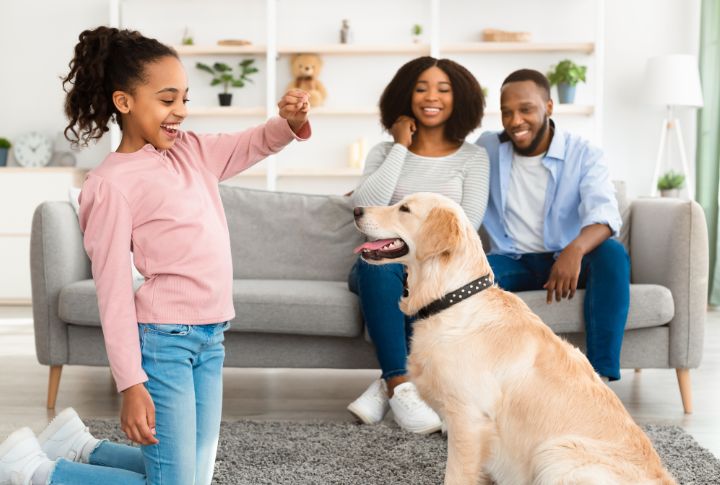
Positive reinforcement can be very effective for working on your dog. When your dog pees in the right place, praise and reward immediately. When your dog notices what happens, it will be encouraged to repeat it.
Thoroughly Clean Past Urine

Due to their strong sense of smell, dogs may detect urine smell indoors and be inclined to pee in the same spot again. To thoroughly clean indoor incidents, use an enzymatic cleaner designed to eliminate urine odor.
Limit Water Intake

While your dog must stay hydrated, limiting their water intake, especially at night, can reduce the chances of nighttime mishaps. Monitor your dog’s water consumption and find the balance between being well-hydrated and not drinking excess.
Supervise Your Dog
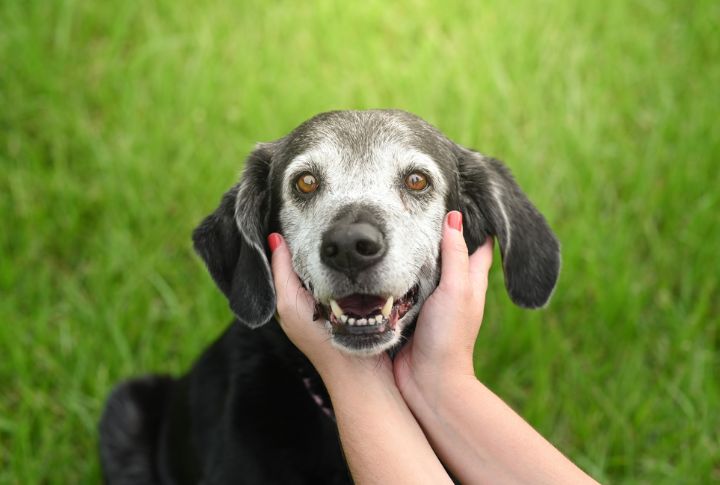
Keeping a close eye on your dog when it’s inside allows you to intervene when it shows signs that it needs to pee. If you see your dog sniffing around or circling, take it outside immediately to its designated potty area.
Use a Crate

Dogs naturally avoid soiling their sleeping area, so a wide crate can help prevent indoor urination when you cannot supervise your dog. The crate is a temporary den where they learn to hold their bladder until they are taken out to a suitable spot for urinating.
Use a Leash
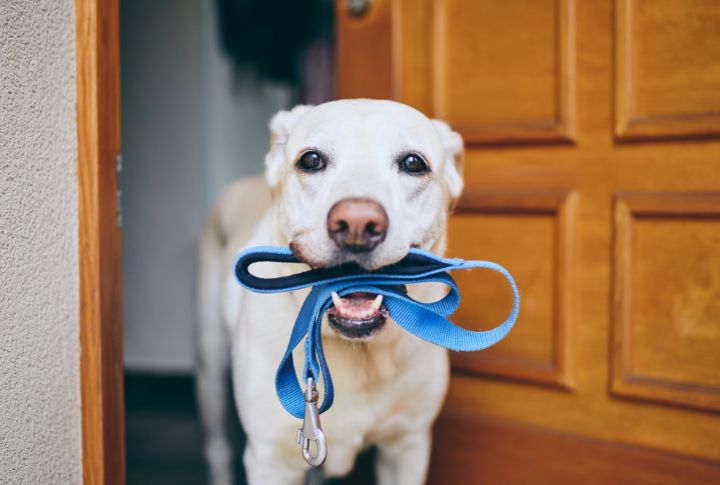
Leashing your dog inside allows you to quickly guide it to its pee spot if you notice signs that it needs to go. It is beneficial during the initial stages of home training when accidental urination is more likely to occur.
Provide Regular Bathroom Breaks
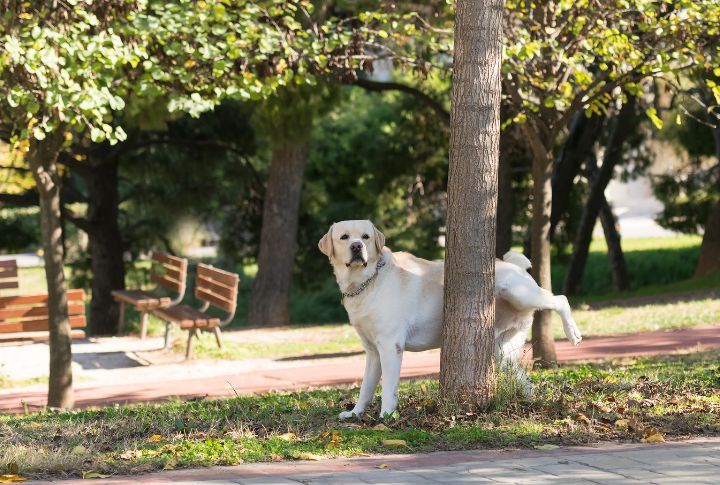
Make sure your dog has plenty of opportunities to go outside and pee. If they empty their bladders frequently, peeing inside is less likely to happen. Puppies and older dogs may require frequent breaks, so be attentive to your dog’s needs and schedule.
Address Medical Issues
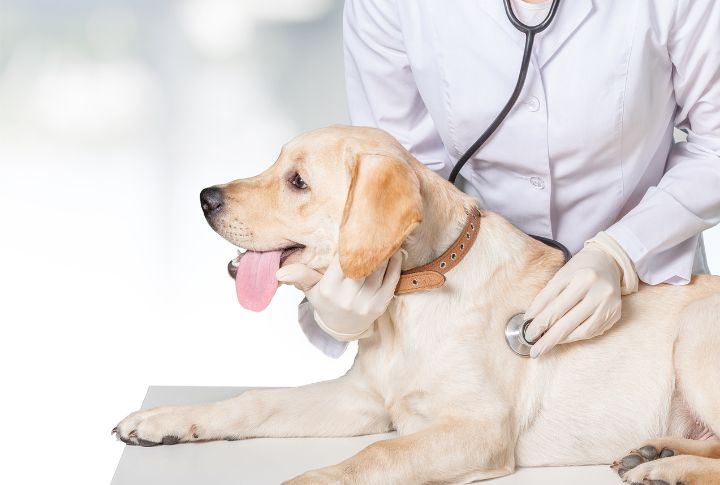
Sometimes, dogs taking a leak in the house can be a sign that they have a urinary tract infection or bladder issue. If your dog is doing it frequently, consult with your veterinarian. If there’s no medical issue, at least you can rule out medical causes.
Avoid Punishment
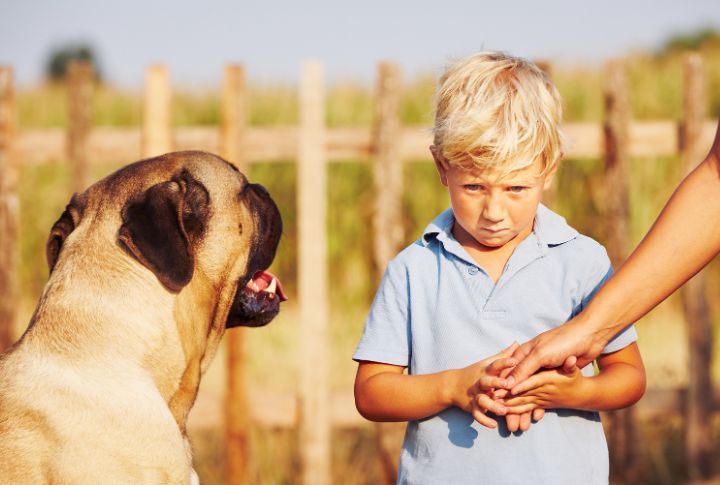
Accidents are expected during the training phase, and punishing your dog for them can be counterproductive. Punishment can make your dog fearful and anxious, potentially leading to more cases of what you’re trying to avoid. Instead, focus on rewarding them for good conduct.
Consider a Belly Band
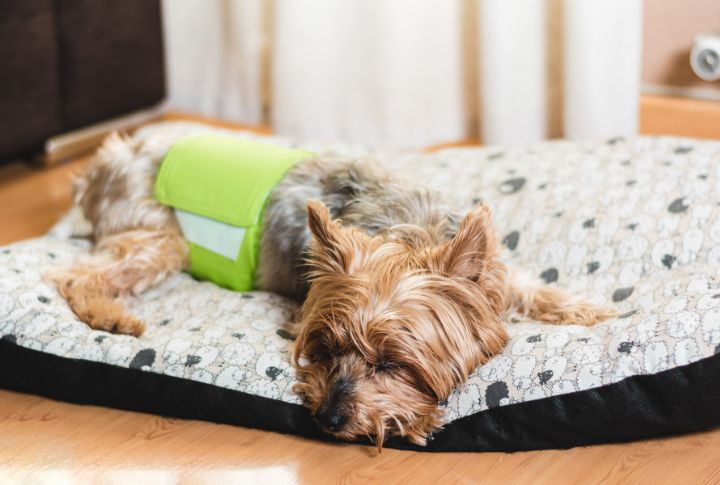
Belly bands are fabric wraps that go around a male dog’s belly and are designed to discourage marking behavior indoors. If your male dog is prone to marking where you live, this band can be a temporary solution while you work on something permanent.
Create a Bathroom for Potty Breaks
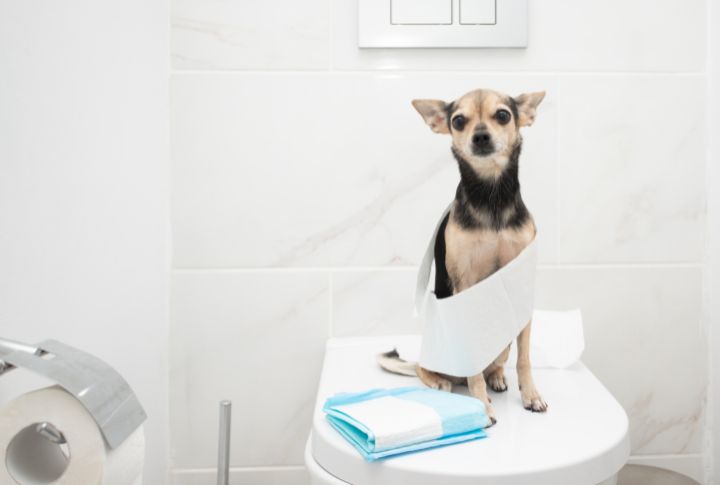
Provide your dog with a designated area to pee. Consistently take your dog to this place and treat it when it pees there. It reinforces the practice of having to go to the appropriate outdoor location.
Adjust Feeding Times

Feeding your dog at regular times can regulate its urinating habits. By feeding your dog on a consistent schedule, you can predict when it will need to go outside to pee and take it out accordingly.
Monitor Stress Levels
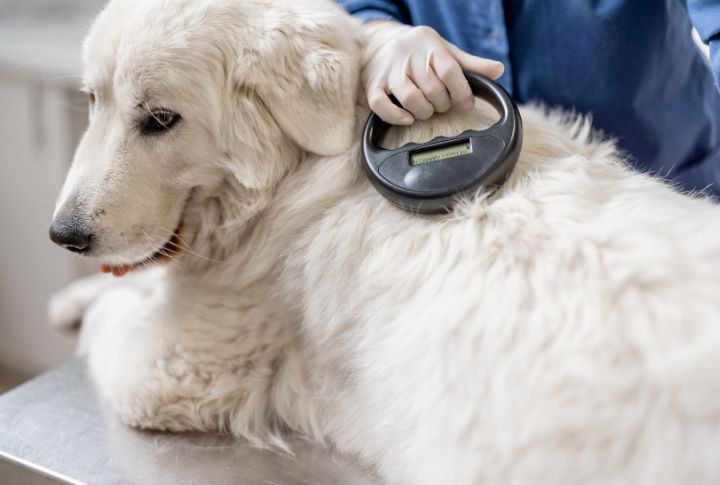
Stress and anxiety can contribute to indoor urination issues in dogs. A calm, relaxed dog is less likely to urinate indoors. Minimizing stressors in your dog’s environment and plenty of exercise will relax them.
Consult a Professional
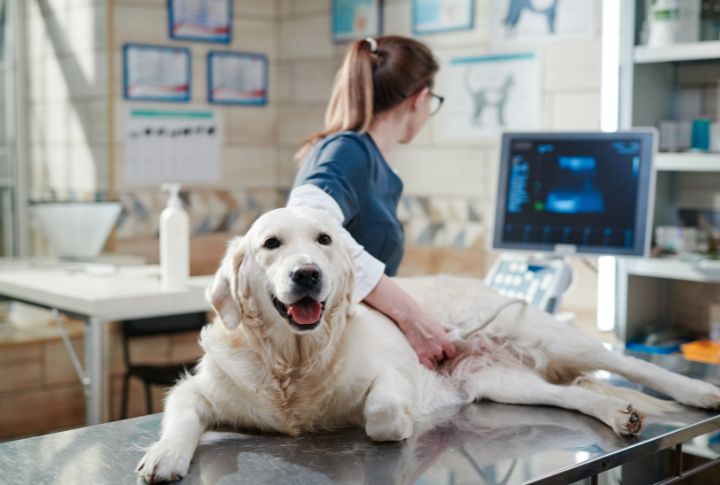
Have you tried various methods, and your dog continues to pee where it shouldn’t? It’s time to seek assistance from a professional dog trainer or behaviorist. They can assess your dog’s behavior and provide personalized guidance to address the issue.
